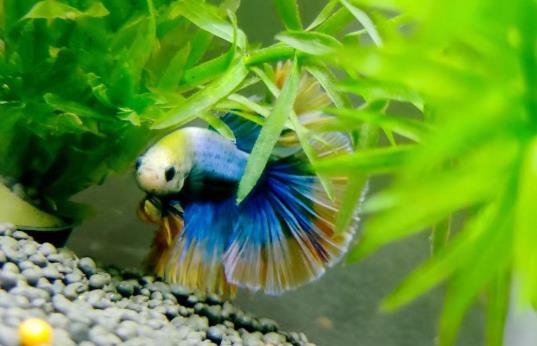Careful matching is required when keeping live aquatic plants with betta fish. Improper plant selection can lead to water quality deterioration, fin damage, or even the death of betta fish. Below are key precautions and recommendations:

1. Avoid Dangerous Plant Types
Plants with thorns or sharp edges (e.g., Elodea, small-leaf Anubias): These can easily scratch the betta’s thin tail fins, leading to infections (such as fin rot).
Invasive plants with excessive growth (e.g., Water Hyacinth, Hornwort): They occupy space, cause oxygen deficiency, and contaminate water quality when decaying.
Plants prone to rotting or toxin release (e.g., Chinese Money Plant, terrestrial plants converted to aquatic use): Rotting increases ammonia levels, endangering the betta’s health.
2. Recommended Safe Plants
Anubias (large-leaf varieties): With blunt, round leaves, they are durable and can absorb nitrates.
Moss species (e.g., Marimo moss balls): Soft and thornless, they are suitable for bettas to swim through and do not block the water surface.
Java Fern: It has a stable root system, is not easy to rot, and is ideal for aquarium landscaping.
3. Rearing Recommendations
Bare tank first: Bettas are sensitive to water quality. A bare tank is easier to maintain and reduces the risk of bacterial growth.
Regular inspections: If plants are used, promptly remove rotten leaves to prevent water quality deterioration.
Control quantity: The coverage of plants should not exceed 1/3 of the aquarium to ensure sufficient activity space for bettas.
4. Other Precautions
Avoid substrate sand: Sand easily traps dirt, may alter water hardness, and increases the risk of diseases.
Breeding period adaptation: When male bettas blow bubbles to build nests, floating plants (e.g., Duckweed) can be provided for assistance.
Choosing plants reasonably and maintaining stable water quality can balance the aesthetics of the aquarium with the health of betta fish.
